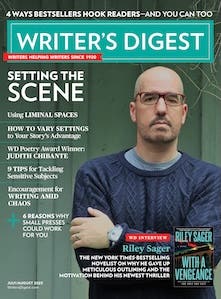How I Got My Agent: Eugenia Kim
“How I Got My Agent” is a recurring feature on the GLA blog. Some tales are of long roads and many setbacks, while others are of good luck and quick signings. Eugenia Kim, is a writer of both novel-length and short fiction. Her first novel, The Calligrapher’s Daughter is both historical and multicultural.
"How I Got My Agent" is a new recurring feature on the GLA blog. I find it fascinating to see the exact road people took that landed them with a rep. Seeing the things people did right vs. what they did wrong (highs and the lows) can help other scribes who are on the same journey. Some tales are of long roads and many setbacks, while others are of good luck and quick signings.
MERIT BADGES
Once I knew I was writing a novel, I also knew it would help to have published work when I was ready to find an agent. With the dreamy optimism of the inexperienced, I submitted stories and essays to the mountaintops: The Atlantic, The Paris Review and Granta. And th
us began a decade-long process of manuscript revision paralleled with humbling self-revision. A few pieces did manage to fill some pages in anthologies and regional literary journals, and I gathered these little recognitions like scout merit badges, pinning them to the sash I’d show to prospective agents.During the years of schooling, reading, writing and revising, I’d collected a fistful of agents’ names from book acknowledgments, industry articles and seminars, and—the golden fleece in the agent search—referral promises from author friends. I had learned about the mechanics of the process: the query letter with its pithy opening sentence, the snappy synopsis, the bio (adorned with my merit badges), the strict compliance to submission guidelines, the helmet for the barrage of rejections. Patient and perhaps too-kind friends had read my novel and delivered thumbs-ups. I began querying literary agents partly because I couldn’t face revising the manuscript yet again. Instead, I wrote and repeatedly revised the query letter, synopsis and bio. I should have paid more attention to the lessons that rose from boiling down a manuscript into a one-page description. I was seeing my novel in a different light, its themes shifting in emphasis as I tried to write the kind of copy that would sell the book. Like any loving mother, I believed that no one but I could see the flaws in my 500-page child.
QUERIES AND SETBACKS
After so many years working on the nove
l, the relative speed of creating the query package prodded the impetus to send it out. I mailed it to my best hope, careful to give her an exclusive submission. As a fail-safe measure I bought the 2006 Guide to Literary Agents, checked who might be a good fit for my novel and verified their submission guidelines online. The stars shown brightly the day the agent’s assistant called asking for the first 50 pages, and I barely slept—until the rejection came. It included a generous paragraph pointing to the weaknesses that I continued to rationalize away. As a salve, I sharpened the query and send it out again, and yet again, until I’d burnt through the precious commodity of the half-dozen agents with whom I had a meaningful connection. With each rejection came a revision of my writerly worth, a meek reshaping of the image of big-name agents fighting over my pages flying in scattered delight.Rather than work on my manuscript, I created a detailed list of agent prospects coded by cold-query acceptance levels, for affinity of their represented books to mine, and charted to date-track the process. About 30 queries in I received an offer, but the agent’s request to radically refocus the novel didn’t feel right, nor did the tone of the conversation we had. I agonized over this decision, finally choosing to trust my gut over my eagerness to sign. That experience, along with 40 rejections in nine months, made it impossible to deny that my child wasn’t co
mmunicating properly. I devoted time to rehabilitate her. Plus, there were only ten more names on my prospective agent list.
Order a copy of Eugenia Kim's The Calligrapher's Daughter today.
Amazon
[WD uses affiliate links.]
AN UNEXPECTED CALL
A month later, I knew I had a better product. Even the query felt simple to revise and sounded fresh and clear. And as the winter holidays approached, I had better results. Three agents requested the complete manuscript. I nurtured hope that my novel would have a little fireside attention in a comfortable home setting.
Then came a call from Nat Sobel. The strange thing was: I'd heard of Nat but he was not one of the many agents I queried. He actually called to say that he had admired my short story in a small literary journal and asked if I had anything book-length. I described the novel and, my brain going clickity-clack, told him that three other agents had the full manuscript. I sent it overnight to his holiday vacation home—the fireside!—and the next day he said Sobel Weber Associates was interested if I was open to revising the material. This time, knowing that revision had improved my “finished” novel and could only make it better, and with all my expectations thoroughly revised after the year-long querying process, it felt completely right.
Eugenia Kim is a writer of both novel-length and short fiction. Her first novel, The Calligrapher's Daughter is bothhistorical and multicultural.


